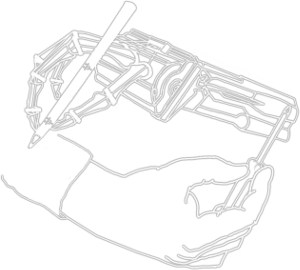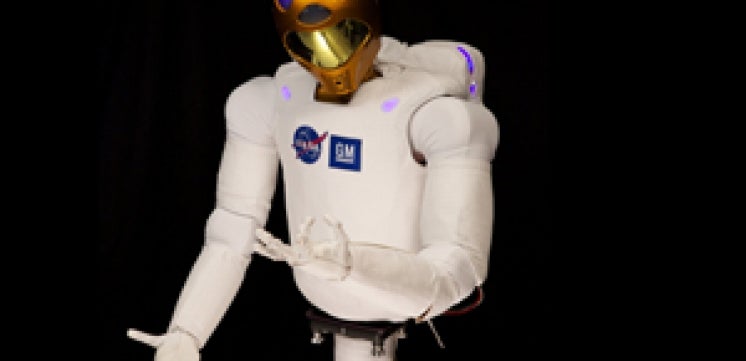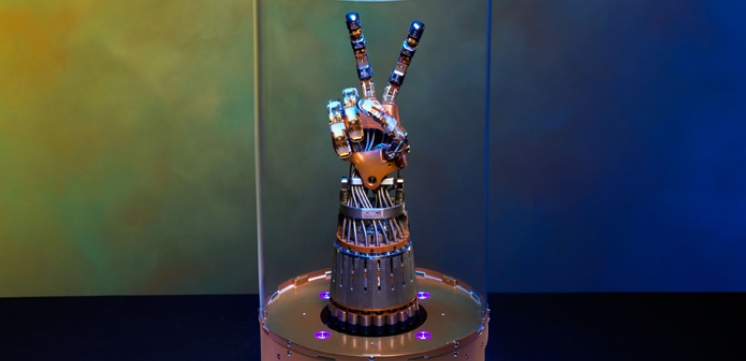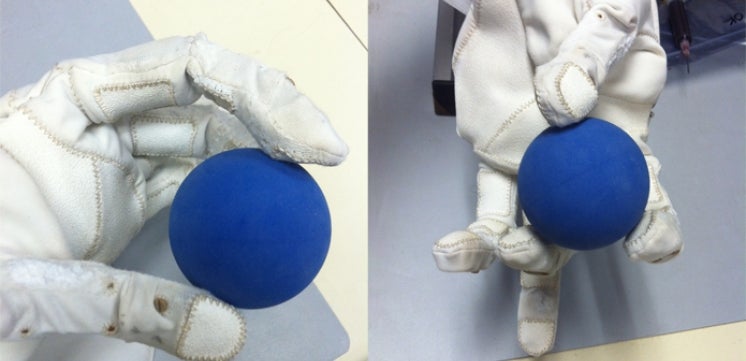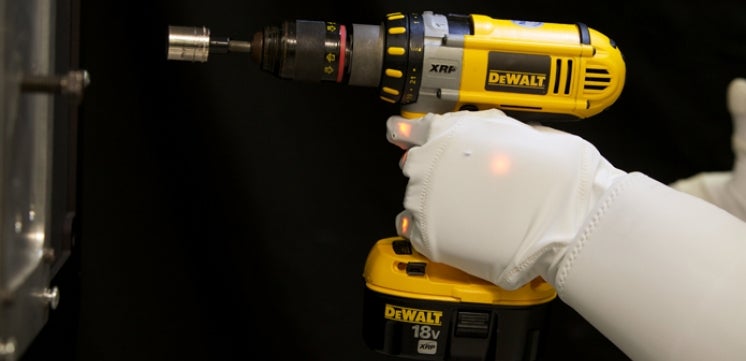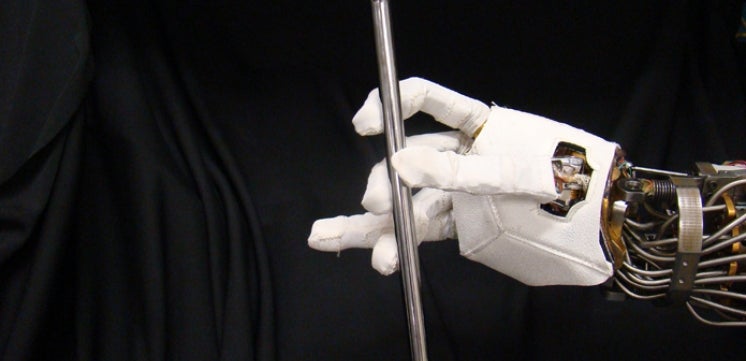Dextrous object manipulation with hands is a crucial task, but robots have thus far been unable to match the robust performance and graceful movements exhibited by human hands. Compliance and its modulation play a big role in the superior performance of the human hands. Recognition of this fact has pushed us to explore mimicking human biomechanics by focusing on the design and implementation of compliance in robotic hands. In particular, compliance arranged parallel to the actuators or muscles, which is present in human hands in the form of ligaments and joint capsules, could be playing a role in the human hand's robust grasping and manipulation ability.
We also work with NASA's space humanoid, Robonaut 2, to improve the capabilities and performance of its tendon-driven hands. Dextrous grasping and manipulation requires accurate control of fingertip positions and forces, accomplished through a Cartesian stiffness control for the fingers and thumb of the R2 hand. The controller is so designed that the singularities are avoided in the primary fingers, and distal joint stiffness is added in the thumb for full controllability. We also developed a higher-level object stiffness control law for explicit control of grasp forces and object position and orientation. The complete algorithm was tested experimentally on the R2 hand, with results demonstrating tracking performance and robustness against disturbances.

